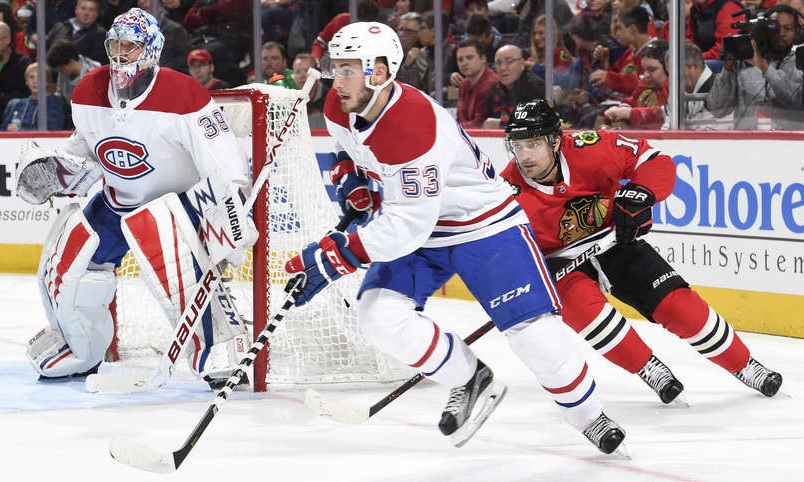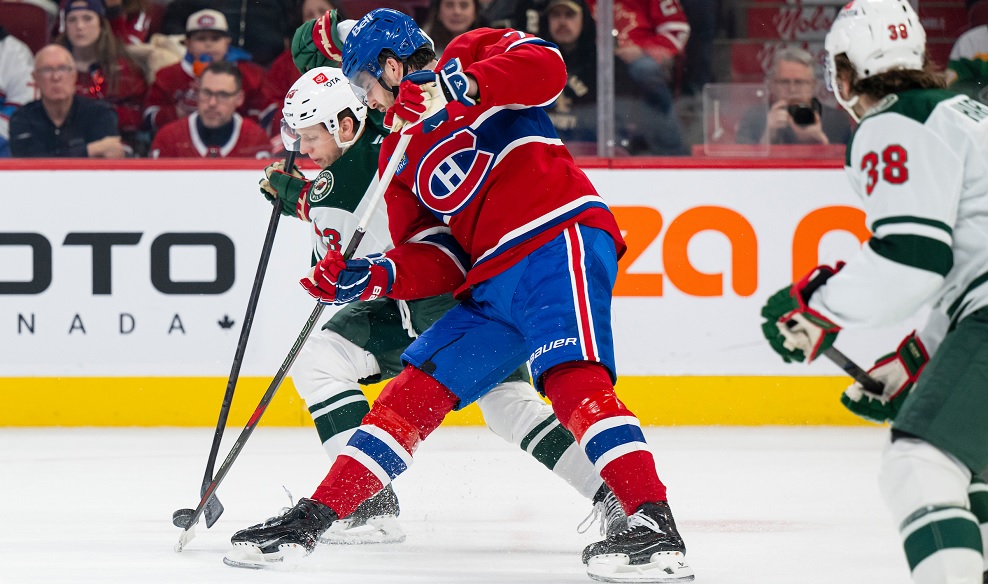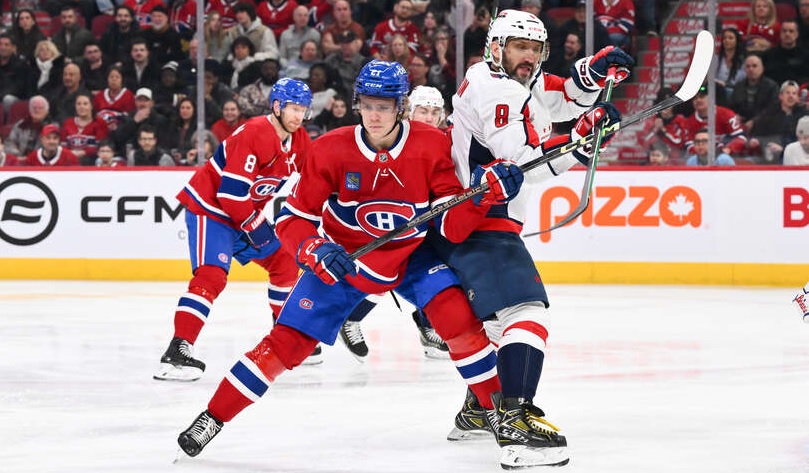HabsWorld.net --
No single position has changed as much as Montreal’s defence over the past year. Several newcomers were added in the NHL while they drafted four others last June. Despite that, a lot of work still needs to be done on the back end.
NHL
Signed: Karl Alzner, Jordie Benn, Victor Mete, Jeff Petry, Mike Reilly, David Schlemko, Shea Weber
RFA’s: None
UFA’s: None
Montreal’s ‘big three’ (at least in terms of payroll) did not live up to their billing last season. Weber played through an injury for a while and wasn’t his usual self before being shut down for the year. A return to health for him is crucial if the Habs are going to get back into a playoff spot. Petry was asked to take on the number one role when Weber went down and he had moments where he thrived and others where he struggled. He’s best used on the second pairing and gives the Habs a nice one-two punch on the right side. Meanwhile, Alzner’s first season with the Habs wasn’t one to write home about. He was brought in to anchor the penalty kill and provide some stability defensively. However, he struggled in Montreal’s system and while he’s getting paid to be an impact player, he’s more of a complementary piece unless the new to-be-named defensive coach really gets him going.
GM Marc Bergevin tried to shift the rest of the back end towards more of a by-committee approach. While the extra depth is nice to have, third pairing tweaks only go so far. Schlemko was injured early on and never found his footing. With two years left on his contract, he could be someone that gets actively shopped this summer. Benn took a step back from 2016-17 and his comments about the rotation used at the end of the season certainly makes it a possibility that they look to move him as well. Reilly had some struggles in the defensive end upon his acquisition but his offensive skills certainly make him worthy of keeping him around to start the season.
Then there’s Mete who was one of the few bright spots this past season. He shocked many by making the team out of camp and even held his own with Weber for a time. He did, however, struggle at times as well and then fractured his finger just after the trade deadline to end his season early. He did enough to warrant being considered for a spot next season but the question is whether or not that’s ideal for him. Is he better off in a second or third pairing role with the Habs or starting out as the number one defender in Laval that plays north of 25 minutes per game? Bergevin’s moves (or lack thereof) this summer may indicate which way the organization is leaning when it comes to that particular question.
Needs Assessment: High – Finding a legitimate top-four defender to play with Weber is a must. Mete held his own but that’s not an ideal spot for him and the rest of the depth brigade isn’t going to cut it either. Options are limited in free agency so a trade may be the way they go here. Finding a way to move Schlemko and/or Benn would free up a bit more cap flexibility and a roster spot for a replacement either from the open market or one of the waiver-eligible youngsters.
AHL
Signed: Simon Bourque, Noah Juulsen, Brett Lernout, T.J. Melancon (AHL deal), Michal Moravcik, Adam Plant (AHL deal), David Sklenicka, Matt Taormina, Rinat Valiev
RFA’s: Tom Parisi
UFA’s: None
AHL Free Agents: Eric Gelinas, Stefan LeBlanc
Taormina was brought in to give the back end a jolt offensively and he did just that. He finished third league-wide in points by a defenceman and did so despite missing 13 games due to injury. Had he stayed healthy, he’d have led the way. He’s a liability in his own end but they knew that going in. Lernout’s third professional campaign was a very quiet one – he’s a stable player that can throw punishing hits but the rest of his game still leaves something to be desired. Valiev didn’t play much after being acquired (he spent more time in Montreal on IR than anywhere else) but he’s a legitimate top-four defender in the minors which is something they can use.
The two rookies in Bourque and Juulsen had polar opposite years. Bourque struggled with the speed and pace of the game and wound up being a frequent healthy scratch, playing behind guys on minor league deals. Starting him in the ECHL would make a lot of sense. As for Juulsen, he didn’t light it up offensively but he made a big impact overall and earned his recall to the Habs where he didn’t look out of place. Management will have a similar call to make with him as they do with Mete – is it better for him to be a depth guy with the Habs or a top player with the Rocket?
Last week’s additions of Moravcik and Sklenicka are certainly intriguing. Neither is believed to be NHL ready but both have European out clauses in their deals so the possibility of one or both heading back home at some point is a real possibility. Moravcik doesn’t have a lot of upside but could hold down a third pairing spot while Sklenicka, who is better suited for the current trend of speed and skill, needs a lot of further development. If both are willing to stick around for the full season, Laval’s back end will be a whole lot deeper at the very least.
Gelinas wound up being a victim of the veteran rule at the start of the year but once players started getting hurt and recalled with no effort to replace them, he found himself in the lineup regularly. His shot is a real weapon but weaknesses in the rest of his game make him best suited as a depth player. LeBlanc was a surprise early on and earned a regular roster spot but his overall upside is limited. The signing of Melancon likely pushes him elsewhere although if he wanted to return as someone who could maybe start in the ECHL, they could do a whole lot worse.
Needs Assessment: Medium – If Juulsen starts in Laval and both of Lernout and Valiev make it through waivers (Taormina also requires them but should pass through safely), that’s a quality top-four before even factoring in the Czechs. However, given the uncertainty surrounding a lot of those players, adding one more quality rearguard would really help, especially if injuries strike as bad as they did in 2017-18. Depth-wise, they’re not in bad shape with Bourque and the two players on AHL deals so not a lot needs to be done there.
Unsigned/Junior/College Prospects
Defence has been a major focus for the Habs who have selected four blueliners in each of the last two drafts. Despite that, the overall prospect depth at that position isn’t all that strong. To be fair, two of those picks (Mete and Mikhail Sergachev) have already graduated which does skew things a little bit.
In terms of the four selected in 2017, it was a bit of a mixed bag. Josh Brook was injured to start the season, came back and went on an immediate tear, and then was quiet to finish the season. He’s a strong skater with a decent all-around game and has some legitimate NHL upside. Cale Fleury saw his role get reduced when he was dealt to Regina but he finished up strong. He could turn pro next season and suit up with Laval which is probably the best path for him. Jarret Tyzska was injured in the playoffs but put together a decent regular season and while he is a bit of a project, he’s trending towards being worthy of an entry-level deal. As for Scott Walford, his strong showing from the second half of 2016-17 didn’t carry over to this past season. He will need to take on a bigger role next year to help ensure he gets signed.
The Habs have drafted some gambles in recent years in the hopes that down the road they could turn into a decent prospect. Nikolas Koberstein didn’t have his college team fold (which was a real possibility) and played a regular role for Alaska-Fairbanks in his junior year but he is still just a depth player there. That doesn’t bode well for his future with Montreal. Arvid Henriksson spent his second straight season at the Swedish junior level and was pretty quiet once again. The Habs still have two years to sign him so there’s still a bit of time left for him to turn his fortunes around but he’s going to have to take a big step forward quickly.
Needs Assessment: Medium – There isn’t a real blue-chipper in the mix but Brook and Fleury have some intriguing upside. However, both of those players are right shots; having them along with Weber, Petry, and Juulsen (plus Lernout) put them in good shape on that side long-term. The left side, however, is an area of weakness throughout all levels of the organization. As a result, it wouldn’t be shocking to see the Habs try to add another lefty or two at some point in the draft later this month.
Other Articles in this Series:


